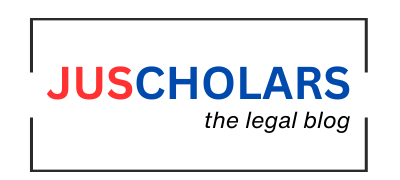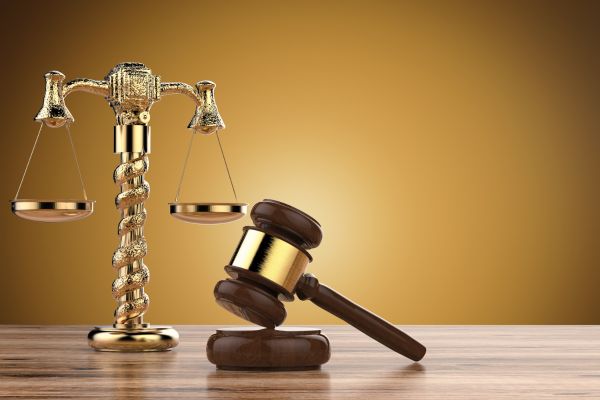Cybersecurity and data privacy are, today’s most critical legal domains since digital technology has gotten afoot in each and every dimension of human life. This article discusses the framework, the challenges, and the path to evolution of data privacy and cybersecurity legislation[1]. It highlights the international and domestic importance of such actions.[2] It outlines several mechanisms developed with the motive of protecting both individuals and organizations against cyber threats as well as sustaining data integrity and confidentiality.[3] The assessment of these mechanisms would consider the present legislative frameworks, contemporary challenges, and landmark case laws.[4]
Indeed, with exponentially increasing technology dangers, cybercrime and data breach have become significant and more critical.[5] In the wake of the latest cyber attacks, governments worldwide have enacted full-fledged cybersecurity and data privacy laws such as the General Data Protection Regulation in the European Union and California Consumer Privacy Act in the United States.[6] In this regard, Digital Personal Data Protection Act, 2023 marks an important landmark in India for the regulation of data privacy. These laws have problems related to adaptability, enforcement, and harmonisation and are associated with these. It is continually being changed within a digital environment.[7]
This would introduce an international standard for data privacy. Emphasis is now put on the factors of accountability, data minimization, and user consent. Further, such application has brought changes to the same structures existing in the other parts of the world. International transactions on data have acquired uniformity.[8]
The Indian version would be the Data Protection and Ethics Act of 2023, otherwise called DPDPA. They involve such provisions regarding the management of consent, punitive provisions for violations regarding data security breaches, and more robust obligations under data fiduciary[9]. According to Cybersecurity Ventures, the global cost of cybercrime is projected to reach over $10.5 trillion annually by 2025[10]. This is an assertion supported by figures. That in any case amount should make quite overt the serious necessity for comprehensive stiff legislative and actions against these so-called cyber attacks.
The Supreme Court of India had struck down Section 66A of the Information Technology Act of 2000 in the year 2015, mainly because it was vague and prone to misuse. The case is that of Shreya Singhal v. Union of India[11]. This case highlighted the need for finding a balance between fundamental rights such as freedom of speech and cybersecurity.
It filed a proceeding against Agencia Española de Protección de Datos and Google Spain SL in 2014. A Court of Justice judgement that thumps down landmark decisions enshrines the concept of “Right to be Forgotten”, it projects to an owner private individual exercising dominance over its data privately existing across the cyberspace of Internet.[12]
The core problem in the case of Microsoft Corporation v. United States of America, 2018 lies in the fact that how extra-territorial the ambit of the Stored Communications Act runs that has resulted in complexities pertaining to data privacy issues in the context of the border.
In the case of Supreme Court of India v. Union of India[13], 2017 (Justice K.S. Puttaswamy, Retired), the Supreme Court of India recognized privacy as a fundamental right, which has resulted in a substantial difference in data privacy and cybersecurity legislation.
Data fiduciaries are those people who, pursuant to a regulation like the GDPR or DPDPA, set the purposes and the means of dealing with personal information. “Privacy by Design” is a strategy that enforces data protection mechanisms to be inherently part of a system’s structure, part and parcel of an information system as a matter of course.[14] Cross-border data flow refers to the flow of information across international borders, which is controlled by mechanisms like Standard Contractual Clauses (SCCs). The “data subject” is the person whose personal information is collected, processed, or stored.
The roots of data privacy and cybersecurity legislation go back to an increasing reliance on digital systems.
First, it was merely protecting systems from unauthorized access. This ever-longing list of data-dependent technologies generated growing care over personal and sensitive data. The OECD Guidelines on the Protection of Privacy and Transborder Flows of Personal Data of 1980 happens to be one of the first cross-border efforts made on data privacy. That paved the ground for a lot of frameworks that come alive today in defense of people’s rights with expectations of responsibility and transparency.[15]
Most of the standards set by the International Organisation for Standardisation, amongst others, involve the ISO/IEC 27001 standard, which defines guidelines on a management system for information security. The standards contribute to providing an organized way through which sensitive information can be guarded in order to adhere to various rules in a nation and worldwide. In the same way, the Budapest Convention on Cybercrime 2001 remains to be a staple of international cooperation against cybercrime. This contains standards for substantive and procedural law.[16] Even with such efforts all over the globe, legislation coordination on cybersecurity and data privacy remains an enormous barrier. Such is the difference between cultural, legal, and economic contexts forming the grounds of legislative priority and enforcement mechanism differences. For instance, the GDPR is rights-based, with high sanctions. The United States of America is sectoral and has laws that relate to specific sectors, such as the Health Insurance Portability and Accountability Act, HIPAA, among others.[17]
Examples of emerging technologies that bring new cybersecurity and data privacy issues include Blockchain, quantum computing, and AI. For example, issues like lack of accountability, algorithmic bias, and misuse of data govern the AI-based systems. An example of legislators trying to strike a balance between innovation and regulation is an EU proposed Artificial Intelligence Act to create a risk-based framework for AI governance.[18]
The thrust of cybersecurity law aims to protect critical infrastructure, for instance, energy grids, transportation systems, and healthcare facilities. The experience over the ransomware attack on Colonial Pipeline in 2021 exposed weaknesses within the U.S. system. There are existing laws that engender information sharing between the public and private sectors, such as the United States Cybersecurity Information Sharing Act of 2015, which minimizes the chances of risks occurring.
Each business has different concerns regarding data security and data privacy. For instance,
The law of United States, applied to health care industry, is known as Health Insurance Portability and Accountability Act or HIPAA. It elaborates the matters of confidentiality and security regarding health records.[19] The most commonly prevalent example of ransomware against the hospitals is described as under.
Finance: Because such organizations or institutions hold a very high value, finance is most attractive to cybercriminals. A set of guidelines or requirements that guarantee security for financial transactions is known as Payment Card Industry Data Security Standard (PCI DSS).
With the introduction of e-learning, there is the risk of students’ data from learning institutions getting leaked. An example of this law is FERPA. It is the US law relating to the above-mentioned matter.
Case Law Analysis
The United States Supreme Court ruled in Riley v. California (2014)[20] that a warrant is needed for law enforcement to search a smartphone. This ruling underscores the intersection of technology and privacy rights.
The case of Vishakha and Others versus the State of Rajasthan[21] 1997, before the Indian Supreme Court, set the basis for workplace safety, which now extends to the safeguarding of employees’ digital data, although this was not related to cybersecurity directly.
Navtej Singh Johar v. Union of India (2018): This indirectly brought out the need to protect information about sexual orientation that is recorded in digital data by decriminalizing consensual relationships between two individuals of the same sexual orientation.
Wyndham Worldwide Corporation v. Federal Trade Commission[22] (2015): In this case, there is case law under the Federal Trade Commission Act, which has established that any business will be liable under the Federal Trade Commission Act whenever such businesses do not attempt to develop reasonable cybersecurity measures.[23]
One of those is the Personal Information Protection Law of China, enacted in 2021. While it appears to be highly similar to the GDPR, it does provide some unique provisions that match the cybersecurity objectives of China.
The Notifiable Data Breaches Scheme is a legislation introduced by the country of Australia in 2018. The rationale behind it is supposed to foster and achieve an open and responsive account by requiring organizations to report all types of probable to cause big-time harm breaches. The most important statute regulating South African data privacy law is POPIA-the Protection of Personal Information Act, which emphasizes responsibility and rights on behalf of both controllers and their data subjects respectively. Data localisation is the policy under which many countries, including India and Russia, are passing the data localisation policies that demand the storage of data relating to individuals within the borders of their respective countries. That does create problems related to trade and innovation though it increases sovereignty.
Cyber insurance increases with the same rate as the increasing expenses of cyber events. Currently, there are legislators who are in the making of legislation regulating the industry to create standard policies that would fill the gaps between the coverage.
The concept of digital sovereignty is that countries take control of their digital space; hence, programs like the European Digital Strategy prove this.
Post-Quantum Cryptography: Once the quantum computers are developed, attacks on current encryption methods will be developed. It raises a concern both for lawmakers and technologists who would need quantum-resistant algorithms in order to encrypt their sensitive information.
Ethical Issues: The very dawn of data privacy issues, such as the misuse of personal information for surveillance activities, warrants very cautious attention by lawmakers in the process.
More advanced equipment is needed in law enforcement when dealing with international issues, and international cooperation has to be implemented because cyber threats are constantly innovated. Public education on rights and responsibilities has to be made as stipulated by cybersecurity and data privacy laws. Flexible legal frameworks: laws have to be amended to become relevant to the new technology developments and new issues. Cooperative means can be enhanced by the strengthening of public-private partnerships for creating resource and collective threat sharing. Such collaboration is of utmost importance between those nations encouraging mutual help in technological as well as legal spectrums.
In any case, with transformation happening at a ridiculously fast pace in the digital world, comprehensive cybersecurity and data privacy legislations cannot be of greater importance than now. Legal frameworks already exist and among them include GDPR, DPDPA, HIPAA, among others, yet these must continue evolving because of the fluid nature of technology. For proper navigation through the digital maze, innovation and regulation must walk hand in hand to protect rights while fostering cooperation among nations. If the lawmakers and stakeholders close the gaps currently existing and embrace the emerging trends, it is possible to build a secure yet privacy-conscious digital future.
FAQs
First, what is the main purpose of the cybersecurity legislation?
Aside from protecting the digital systems and data from unauthorized access, breaches, and other cyber threats, the cybersecurity law intends to attain accountability and transparency by a myriad of stakeholders.
What makes the General Data Protection Regulation stand unique against all those other privacy regulations?
It is claimed that GDPR stands out not only for extra-territorial applicability but also with strong penalties towards individual rights, and cause to obtain user consent. Being a benchmark, it affects everywhere in the globe for data privacy.
What happens to one who doesn’t hold the law of data privacy in their hand?
Its effects vary with geography. For illustration, under GDPR for example, Internationalized organizations are to be penalised in the forms of fines but capped at an amount of two million euros and four percent from the total business revenue of organizations, whichever in higher.
The data protection rules as regards cybersecurity approach the issue as regards crossing between international borders for data.
The use of Standard Contractual Clauses and adequacy decisions are controlled through laws such as the General Data Protection Regulation which controls the flow of data across borders and has been designed to maintain standards of data protection.
In what percentage do people contribute toward preserving data confidentiality?
The fifth point is that individuals can take preventive measures by being aware of their rights, using privacy settings, and exercising caution when it comes to sharing personal information online.
[1] https://nmsconsulting.com/insights/data-privacy-and-cybersecurity-regulations-introduction/
[2] https://www.upguard.com/blog/cybersecurity-regulations-india
[3] https://www.researchgate.net/publication/357793155_Cybersecurity_Data_Privacy_and_Blockchain_A_Review
[4] https://www.researchgate.net/publication/357793155_Cybersecurity_Data_Privacy_and_Blockchain_A_Review
[5] https://www.researchgate.net/publication/260126665_A_Study_Of_Cyber_Security_Challenges_And_Its_Emerging_Trends_On_Latest_Technologies
[6] https://www.upguard.com/blog/cybersecurity-regulations-india
[7] https://wjarr.com/sites/default/files/WJARR-2024-0369.pdf
[8] https://www.upguard.com/blog/cybersecurity-regulations-india
[9] https://nmsconsulting.com/insights/data-privacy-and-cybersecurity-regulations-introduction/
[10] https://www.researchgate.net/publication/260126665_A_Study_Of_Cyber_Security_Challenges_And_Its_Emerging_Trends_On_Latest_Technologies
[11] AIR 2015 SUPREME COURT 1523
[12] https://wjarr.com/sites/default/files/WJARR-2024-0369.pdf
[13] AIR 2017 SUPREME COURT 4161
[14] https://www.zluri.com/blog/security-privacy-frameworks
[15] https://www.oecd.org/content/dam/oecd/en/publications/reports/2002/02/oecd-guidelines-on-the-protection-of-privacy-and-transborder-flows-of-personal-data_g1gh255f/9789264196391-en.pdf
[16] https://bja.ojp.gov/sites/g/files/xyckuh186/files/media/document/oecd_fips.pdf
[17] https://www.oas.org/es/sla/ddi/docs/oecd%20guidelines%20governing%20the%20protection%20on%20privacy%20and%20transborder%20flows%20of%20personal%20data.pdf
[18] https://legalinstruments.oecd.org/en/instruments/OECD-LEGAL-0188
[19] https://academic.oup.com/idpl/article/1/1/6/759637?login=false
[20] Riley v. California, 573 U.S. 373 (2014)
[21] AIR 1997 SUPREME COURT 3011
[22] 1023142 X120032
[23] https://www.oyez.org/cases/2013/13-132
Author: Anannya Mohanty is currently pursuing a BA LLB at Symbiosis Law School.






